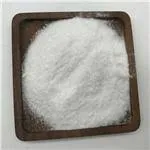The Role of Sulfamate Acid in Chemical Applications
Sulfamate acid, also known as sulfamic acid, is an important compound in the realm of chemistry and industrial applications. Identified by the chemical formula H₃NSO₃, sulfamate acid is an ammonium salt of sulfuric acid, characterized by its white crystalline appearance, low toxicity, and high stability. Its unique chemical properties have led to its widespread use in various fields, ranging from agriculture to industrial cleaning.
Chemical Properties and Structure
Sulfamate acid contains a sulfur atom bonded to an amine group and three oxygen atoms. This structure imparts distinctive characteristics that make it highly useful in various chemical reactions. It is highly soluble in water, making it practical for a variety of applications that require aqueous solutions. Furthermore, sulfamic acid is less corrosive than other strong acids, which allows for safer handling and application in different environments.
One of the most notable features of sulfamic acid is its ability to release hydrogen ions in solution, making it an effective acidifying agent. This property is particularly valuable in regulating pH levels in various chemical processes. Additionally, sulfamate acid acts as a mild reducing agent, which can facilitate specific organic reactions.
Industrial Applications
Sulfamate acid finds utilization across multiple industries, primarily due to its cleaning and descaling capabilities. In the metalworking industry, it is frequently used to clean and prepare metal surfaces. The acid effectively removes oxides and other contaminants from metal substrates, ensuring better adhesion for paints, coatings, and other surface treatments. This function is crucial for maintaining the integrity and longevity of metal components in machinery and constructions.
sulfamate acid

In the world of textiles, sulfamic acid is used as a dyeing and finishing agent. It assists in the fixation of dyes onto fabrics, enhancing the quality and durability of the final product. Additionally, it plays a role in the treatment of textiles by neutralizing any residual alkaline substances from previous processing stages, leading to a finished product that meets industry standards.
Another significant application of sulfamic acid is in the formulation of fertilizers. It serves as a nitrogen source in certain fertilizers, contributing to enhanced plant growth and crop yield. Its compatibility with other fertilizer components enables the formulation of balanced nutrient solutions that cater to the specific needs of various crops.
Environmental Impact and Safety
While sulfamate acid is generally considered to have low toxicity, it is essential to handle it with care, as with any chemical substance. It poses minimal risk to human health when used correctly. However, it is vital to adhere to safety guidelines to mitigate the risk of exposure, especially when working with concentrated forms.
From an environmental perspective, sulfamic acid is increasingly being considered as a safer alternative to other more hazardous chemicals traditionally used in industrial processes. Its biodegradability and lower toxicity levels make it a preferable choice in applications where environmental impact is a concern.
Conclusion
In summary, sulfamate acid plays a crucial role in various industrial applications, thanks to its unique chemical properties and versatility. From metal cleaning to textile treatments and agricultural fertilizers, its contributions are significant in enhancing product quality and efficiency. As industries continue to seek safer and more environmentally friendly alternatives, the importance of sulfamic acid is likely to grow. Future research may further expand its applications, solidifying its position as an essential compound in modern chemistry and industry. Understanding its various roles can lead to innovations that improve processes and products, showcasing the ongoing relevance of this remarkable chemical.

